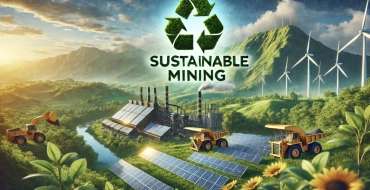About Neo Energy
Transforming Energy with Sustainable Materials & Future-Forward Battery Solutions


Mining is a cornerstone of modern economies, providing critical materials for industries like technology, renewable energy, and infrastructure development. However, the environmental and social impacts of traditional mining practices have raised concerns about sustainability. Balancing resource extraction with environmental responsibility is essential to protect ecosystems, reduce carbon emissions, and ensure equitable economic growth.
Mining activities often lead to deforestation, water pollution, and loss of biodiversity. The World Resources Institute (2021) estimates that mining operations cause up to 7% of global deforestation annually, particularly in tropical regions such as Indonesia and the Amazon rainforest. Additionally, acid mine drainage—when sulfide minerals interact with water and oxygen—can contaminate rivers and groundwater with toxic heavy metals like mercury and lead, severely affecting aquatic ecosystems and local communities.
The social consequences are equally significant. Displacement of communities, unsafe labor conditions, and loss of indigenous lands have been common outcomes of poorly regulated mining activities. These issues underscore the need for a sustainable approach to mining that minimizes harm while addressing growing material demands.
Governments and international organizations play a vital role in driving sustainable mining practices. Policies such as the European Union’s Conflict Minerals Regulation and Indonesia’s environmental compliance laws hold mining companies accountable for their environmental and social impacts. Furthermore, frameworks like the Global Reporting Initiative (GRI) encourage transparency by requiring firms to disclose their sustainability performance.
Implementing sustainable mining practices involves significant investment in technology and training. Smaller mining companies may face financial barriers in adopting these practices. However, long-term benefits such as reduced environmental risks, improved community relations, and enhanced market competitiveness make the transition worthwhile.
Sustainable mining is a critical component of addressing the global demand for resources while safeguarding the environment. By integrating renewable energy, innovative technologies, and community-focused practices, the mining industry can transition toward a more responsible future. Achieving this balance is not only an ethical imperative but also a strategic necessity to ensure long-term economic and environmental stability.
References:



